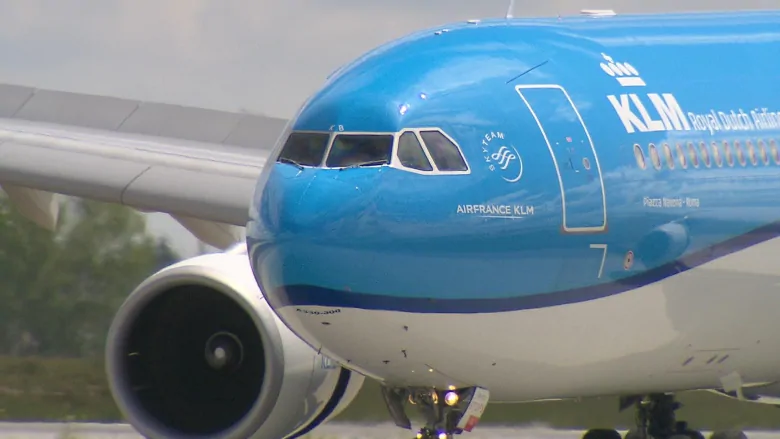A pandemic side-effect: Weather forecasts may become less accurate

An unprecedented decline in global air traffic is limiting the data that meteorologists use to predict the weather.
Commercial air traffic shrunk to 41 per cent below 2019 levels during the last two weeks of March, according to Ian Petchenik from Flightradar24, an online global flight tracking service.
“We have seen a precipitous decline in [air] traffic from mid-March until now and it continues to decline,” said Petchenik.
“The second week in March … it is safe to say that the bottom fell out.”
Meteorologists collect data such as wind speed and air temperature from aircraft as they fly overhead.
“One of the most fundamental parts of weather forecasting is getting the initial state of the atmosphere right,” said Tyler Hamilton, a meteorologist with The Weather Network.
According to Hamilton, there are fleets of aircraft circling the planet, generally at 36,000 to 39,000 feet.
Meteorologists get tens of thousands of observations from these flights.
“That wind observation is particularly vital to weather forecasting,” he said.
“We have gone from about 200,000 tracking globally daily to floating around 60 or 70,000. That is about a 70 per cent reduction in the number of flights circulating the planet and it can have an effect on the flight-level data.”
Even the pressure surface levels are affected. “You can see a three or four per cent reduction in accuracy in short-range forecasts,” said Hamilton.
The jet stream circling the planet is at about the same altitude as a typical flight level, and this is where the lack of information would be missed the most.
Hamilton said other technology can help fill some of those gaps.
“We can rely on a few other sources. One of those sources is satellite observations,” he said, adding that observations on land from weather stations are also not affected.
“We continue to launch weather balloons right around the planet,” he added. “So we can use some of those observations in light of the reduction of flights that are currently taking place.”




